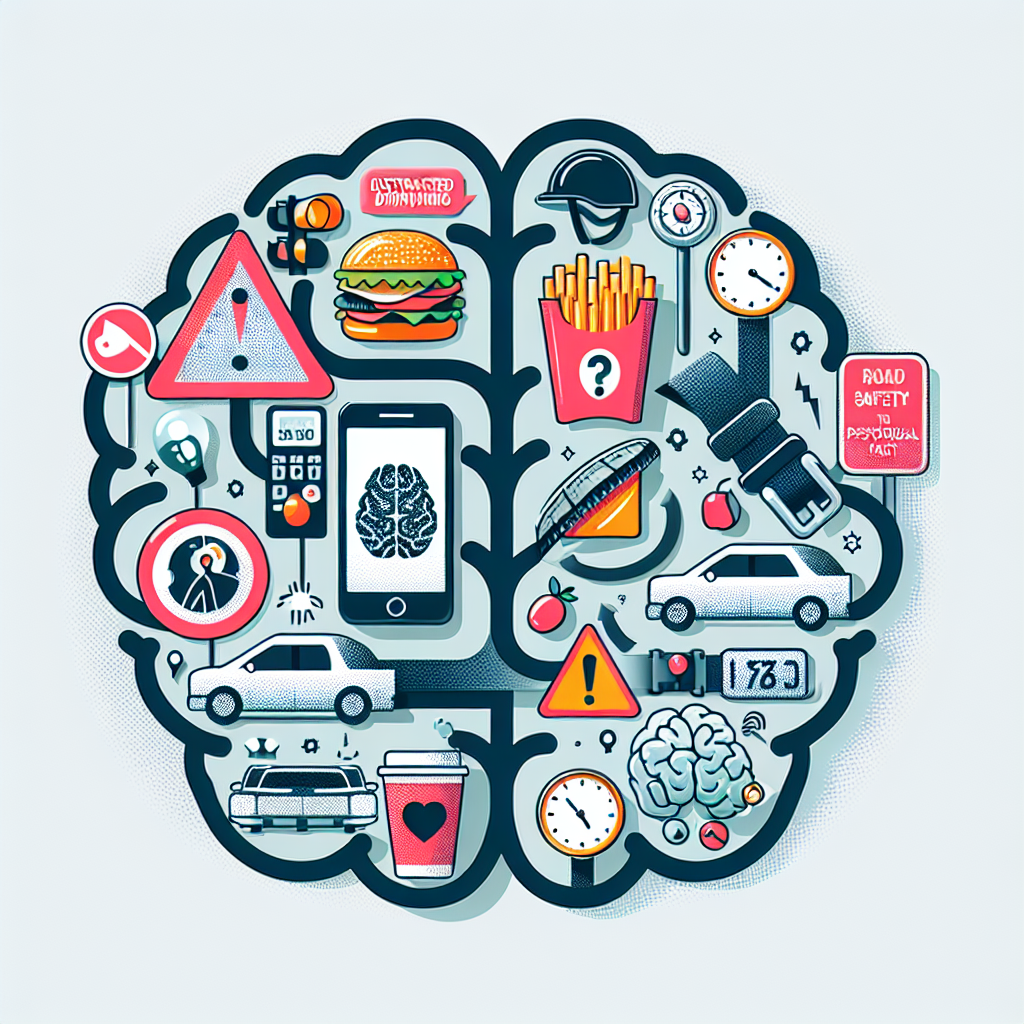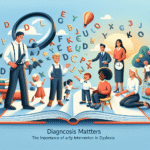
Introduction
Every day, millions take to the roads, navigating their way through bustling streets and serene highways. Yet, for many drivers, the simple act of steering a vehicle has become an arena of distractions. From smartphones buzzing with notifications to the lure of in-car entertainment systems, the challenge of maintaining focus while driving has never been greater. The consequences of distracted driving have been catastrophic, leading to fatal accidents, injuries, and untold anguish for victims and their families. As we delve into this critical subject, we’ll explore the psychological factors at play that both contribute to distracted driving and can pave the way towards improved road safety.
Understanding Distracted Driving
What is Distracted Driving?
Distracted driving is any activity that diverts attention from driving. This includes texting, talking on the phone, eating and drinking, talking to passengers, or fiddling with the car’s audio system. The National Highway Traffic Safety Administration (NHTSA) identifies three main types of distractions:
- Visual: Taking your eyes off the road.
- Manual: Taking your hands off the wheel.
- Cognitive: Taking your mind off driving.
The Psychological Dimension
The psychological landscape surrounding distracted driving is complex. It involves decision-making processes, impulse control, and risk assessment. Understanding these psychological elements can help us combat distracted driving effectively.
The Psychology Behind Distraction
Impulsive Behavior and Risk Assessment
Impulsivity is a key psychological factor that affects a person’s decision to engage in distracted driving. According to the Journal of Safety Research, impulsive individuals are more likely to check their phones while driving or become easily sidetracked by passengers or other stimuli. This impulsiveness often leads to poor risk assessment; drivers may underestimate the dangers involved in multitasking behind the wheel.
Case Study: The Perils of Impulsivity
A compelling case study is that of Sarah, a 24-year-old college student who was involved in a serious car accident while texting a friend. The impulsive decision to check her phone resulted in a collision that left her and another driver severely injured. This incident underscores the perils of impulsive behavior and highlights how distraction can undermine critical risk assessments, leading to dangerous outcomes.
Social Norms and Peer Influence
Human beings are inherently social creatures influenced by their environments and peers. The phenomenon of “social norms” can significantly affect distracted driving behaviors. When individuals observe peers engaging in distracted behaviors—like texting at red lights—these actions may seem normalized, thereby increasing their likelihood of doing the same.
Table: Impact of Social Norms on Driving Behavior
| Behavior | Perceived Acceptance by Peers | Likelihood of Engaging in Behavior |
|---|---|---|
| Texting while driving | High | Increases |
| Using phone at red lights | Medium | Increases |
| Eating or drinking | Low | Decreases |
Increased awareness and education can shift social norms towards rejecting distracted behaviors. By establishing stronger societal disapproval of distracted driving, we can foster a culture that values safety over momentary distractions.
The Role of Technology
Smartphones: A Double-Edged Sword
While smartphones can serve educational and navigational purposes, they are also significant contributors to distracted driving. The constant notifications and social media alerts deliver a barrage of distractions that demand attention and can easily lure drivers away from the road.
Case Study: The Texting-While-Driving Debate
In a notable case in Florida, a jury ruled against a driver who crashed while texting and injured another party. This legal precedent highlights not only personal accountability but the gravity of the decision to engage in potentially fatal distractions. The psychological battle of whether to prioritize driving or the smartphone often ends with tragic consequences.
Technology as a Solution
However, technology can also provide solutions. Numerous apps now exist that disable texting while driving or can help promote adherence to safe driving practices. These solutions assist drivers in remaining focused and less susceptible to distractions, capitalizing on the psychological need for instant gratification by offering alternatives that support safety instead.
The Impact of Emotional States
Stress and Road Safety
It’s no secret that emotional states play a crucial role in driving behavior. Stress, anxiety, or even excitement can lead to lapses in attention and increased likelihood of distraction. Drivers experiencing emotional turmoil may use their phones as a coping mechanism, further dividing their focus.
Analysis: Emotional Regulation Techniques
By employing emotional regulation techniques, such as mindfulness practices or breathing exercises, drivers can improve focus and minimize distractions. This psychological awareness allows individuals to recognize when their emotions might hinder their ability to drive safely.
Creating a Culture of Safety
Education and Awareness
Knowledge is empowering. Educating drivers about the psychological factors that contribute to distracted driving not only raises awareness but also encourages responsible decision-making. Informative campaigns can provide insight into how various situations can impair focus and lead to disastrous outcomes.
Real-World Application: School Programs
Implementing educational programs in schools can create a long-term cultural shift towards responsible driving. Initiatives such as ‘Distracted Driving Awareness Month’ serve to inform young drivers of the grave consequences associated with distracted behaviors, incorporating psychological insights to make the information relatable and impactful.
Legislation and Policy Changes
Enacting laws against distracted driving has been a significant move in promoting road safety. These laws can compel individuals to think twice before engaging in distracting behaviors behind the wheel. However, it is equally important that these regulations are backed by knowledge of the psychological factors driving such behaviors.
Table: Legislative Changes and Impact on Distracted Driving Incidents
| Legislation Introduced | Year | Percentage Decrease in Incidents |
|---|---|---|
| Texting Ban | 2010 | 15% |
| Hands-Free Driving Only | 2015 | 20% |
| Stricter Penalties for Violators | 2020 | 25% |
As exemplified in the above table, legislation can lead to a measurable decrease in distracted driving incidents when accompanied by awareness campaigns that focus on the psychological aspects of these behaviors.
Conclusion
As we explore the multifaceted relationship between distracted driving and psychological factors, it becomes evident that addressing this issue requires a holistic approach. From impulsivity and social influences to technology’s dual role, understanding the psychology behind distracted behaviors is essential for fostering a safer driving culture.
By educating ourselves, promoting awareness, and supporting responsible legislative measures, we can transform the landscape of road safety. It is time to shift the narrative from distracted driving to adopting proactive measures that prioritize safety. Let’s engage in conversations, support informative campaigns, and advocate for laws that reflect our shared commitment to road safety.
Actionable Insights
- Empower Yourself: Understand the distractions that affect your driving. Silence your phone and minimize in-car distractions.
- Spread Awareness: Share your experiences and educate others about the dangers of distracted driving.
- Promote Safe Driving Culture: Advocate for school programs and community initiatives to foster awareness and create a collective movement toward safer roads.
FAQs
1. What constitutes distracted driving?
Distracted driving includes any activity that diverts attention from driving, such as texting, using a phone, eating, or interacting with passengers.
2. What are the main psychological factors contributing to distracted driving?
Key psychological factors include impulsivity, emotional states, social norms, and risk perception.
3. How can technology help reduce distracted driving?
Technology can provide apps that limit phone use while driving and offer alerts to encourage safe driving behaviors.
4. What can be done to change social norms surrounding distracted driving?
Awareness campaigns, education in schools, and community engagement can effectively shift societal perceptions toward rejecting distracted behaviors.
5. How can individuals manage their emotional states while driving to minimize distractions?
Practicing emotional regulation techniques such as mindfulness, deep-breathing exercises, and recognizing signs of stress can help maintain focus on the road.
By collaboratively working on these fronts, we not only foster safer driving environments but also enhance the overall well-being of our communities. The journey from distracted driving to road safety is essential, and understanding the psychological factors at play is the first vital step.

















